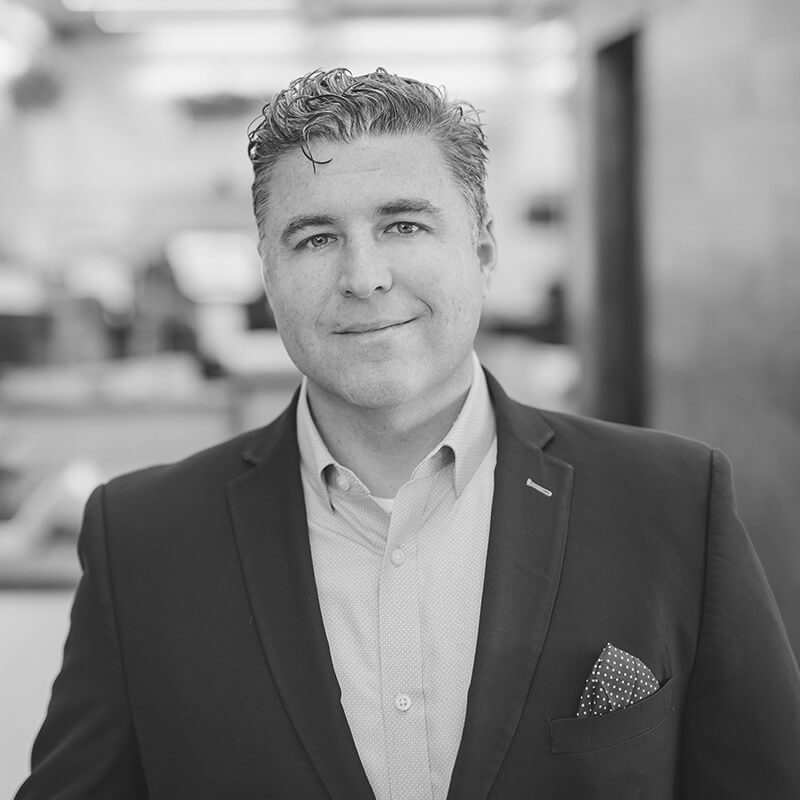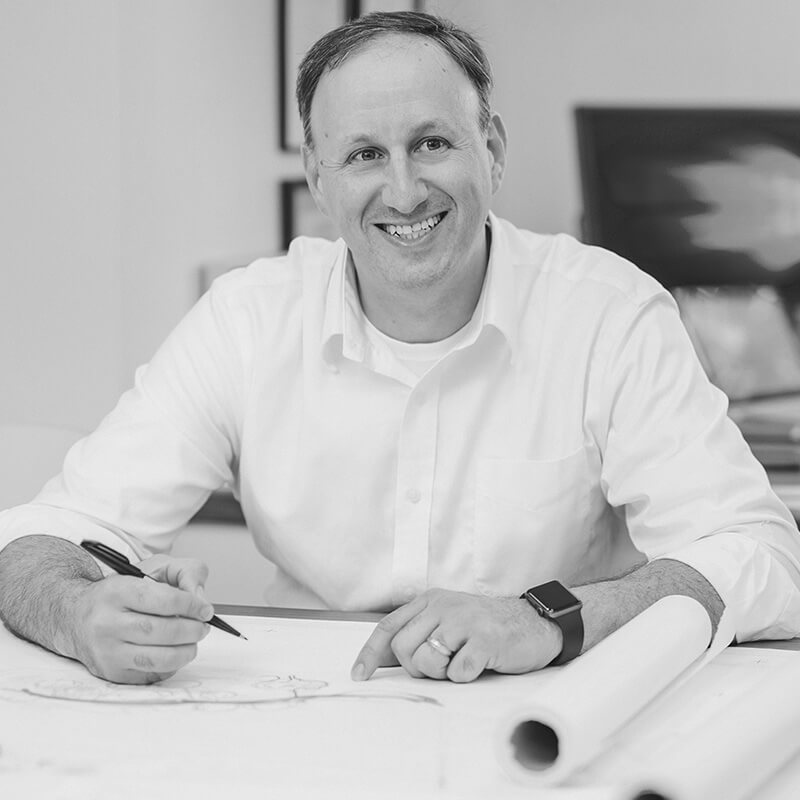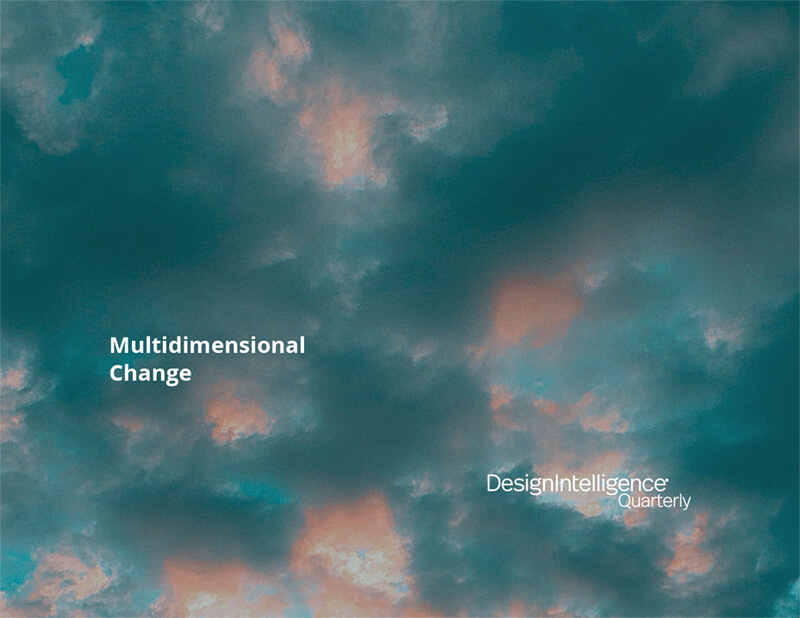Multidimensional Change
by Scott LaMont
CEO, EDSA
and Eric Propes
COO, EDSA
March 29, 2021
Scott LaMont and Eric Propes discuss EDSA’s leadership transition, structure and next-generation aspirational strategies.
DesignIntelligence - Michael LeFevre (DI): Your firm has a great legacy. Since its founding by Edward Durrell Stone Jr. in 1960, EDSA has grown to more than 120 professionals with an international reach. You recently underwent a major change. Your website calls it “The next generation of leadership.” What prompted it?
Scott LaMont (SL): While our previous studio structure paved the way for 60 years of historic growth, we saw an opportunity to improve our practice with a heightened emphasis on strengthening client relationships, improving efficiencies in business processes and a reaffirmation to be an industry leader. Once we committed, it came together quickly. There was no debate. As a leadership group, we all agreed that it was the right decision to benefit future generations of the firm.
Eric Propes (EP): DesignIntelligence helped us through the process. I remember Dave Gilmore asking, “What are you going to let go?” That was the first thing. We started looking at it all from a fresh perspective. With most of the leadership team beginning their professional career at EDSA, along with our deep-rooted legacy, that was hard to do, but we all agreed to it and pursed the change as a partnership.
DI: How did you come together so quickly? That’s not the norm for change like this. Any thoughts on why it was so easy to get consensus?
SL: We didn’t form a quick consensus when it came to the detail of the restructure — that took months of hard work. What came easy was the idea that it was time for EDSA to take the next step in our firm’s evolution. We have always had great potential and the ability to do amazing things but rethinking our “normal” set us on a path to achieve greater results.
EP: The key word Scott mentioned was potential — the potential to grow and better familiarize ourselves with various markets and sectors. We could have stayed the course and been fine, but you can’t get to the next level without change.

DI: Can you overview the major changes? The two of you were brought in as new leadership, but what other structural changes happened? Were criteria set for developing the new leadership or was it obvious?
SL: We can take it in two parts: leadership and structure. One fundamental change was to dedicate more responsibility to senior team members within the organization. In our studio structure, we had always been “player-coaches.” We were all part-time leaders and part-time designers and marketers, which was a model that came with limitations. We realized that accomplishing longer-term goals required more opportunities for mentorship, while still focusing on the health of the business and how we run our projects and teams. Without full-time oversight, those components would never reach their full potential.
Structurally, we looked at how the governance of the organization was working and what made the most sense to support what we were hoping to become. That’s how it started. Simple decisions that positioned younger leaders to assist more in our day-to-day, firmwide operations. It was a nice back-and-forth cadence to get us to a place where we began to see the new structure come into focus.
EP: A big part of the restructuring was looking at our player-coaches. How could we assemble better teams? How could they operate more efficiently, and how can we play to each other’s strengths?
We tried to play to leadership’s complementing talent in the best ways possible and looked at what regions and markets we wanted to be in. We centered the organizational structure around how we could all work better together. The largest shift was a reduction from 13 different studios to six.

DI: You changed leadership, regrouped people and consolidated studios. What about the human, emotional side? How did you cope with those issues through the change — personally, with leadership, and in getting that message out to the firm?
EP: From the start, it had been engrained in our heads, “What are you going to lay down or give up?” That was always the question — the backbone of what we were trying to do. Going into it with that attitude, we had a clearer perspective. It wasn’t, “How does this affect me?”; it was, “How can I best contribute?”
We were also going through COVID during these changes, so it automatically made us more vulnerable. Our approach was not about telling people what they were going to do. It was bouncing ideas back and forth and saying, “This is the idea. What are your thoughts?” That was the key.
SL: If there was a lesson to take away, it’s that discipline and a dedication are needed. It’s easy to say, “All right, let’s meet again in a month,” and then a month later, you spend half the time recapping before taking another step forward. With our meetings coming one after the other, we found our momentum and knew we were on the right track. That’s not to say that the transition was perfect, but we did the best that we could under the circumstances. The open support and communication among leadership was essential and continues to be as we move forward.
DI: I have to believe your process began with core values and vision. You’ve talked about what you’ve had to give up. Can you share some of the values that came into focus, the things that remained?
SL: EDSA already had core values in place that spoke to our beliefs, ideals, practices and the unique essence of our organization. The next step was about weaving our core values into a vision. We began to define where we want to be and where we want to go and the actions necessary to accomplish our goals. While our vision statement will continue to evolve as our needs and ideas of the future continue to develop, our pillars are to perform at a level above the ordinary, help shape the future and remain fundamentally human in all that we do and how we design.
EP: The vision had to be simple but meaningful, which is not as simple to get to as we originally thought. We had sheets of paper filled with hundreds of words we thought would provide meaning to ourselves and the staff, while being aspirational and inspirational. Focusing on our legacy gave us hints to guiding the firm into the future.
DI: Things seem increasingly connected today. As landscape architects, maybe that’s not news to you.
Has your transition positioned you to respond better, or were you always acting across all these issues?
SL: Being landscape architects, our awareness was probably more elevated than most, which positioned us to be more responsive to what’s going on around us. With our realigned teams, we now have time to be more conscious about our design thinking and decision-making, which has given us the opportunity to find greater meaning in contributing to our profession.
DI: What are you worried about and what are you hopeful for?
SL: We have our eyes on a lot of different balls, and we don’t want to miss one of them. Trying to implement some of the changes we’re putting in place as we develop new business and push into new markets requires focus and attention. We want to make sure we live up to the expectations of ourselves, our team and our colleagues.
EP: We got through the last year, which shows we can get through just about anything. There’s nothing but optimism for me. No matter what goes wrong, our team can support the project and support each other. That’s what EDSA has always been about, and we’re ready to see where we can grow in 2021 and beyond.
DI: Having navigated through a firm transition, you’ve got your next generation of leadership. Is there anything you would share as your greatest lesson learned or challenge?
SL: One thing that has served us well is getting people involved. Early in my career, I had the opportunity to engage with leadership. I may have just been a spectator in the room, but it helped me understand the context, the firm and the dynamics around it. So, we’ve been — and will continue to be — transparent with our struggles and day-to-day decisions so everyone can understand and participate. We have a lot of new, young leaders coming up within the firm. They have a spring in their step, and they’re excited to get out there and make their mark. That is our greatest source of hope and optimism.
EP: An additional aspect to consider is our next-generation’s access and understanding of technology, process and the integration of design across multiple disciplines. In the past, we would go to a job site and hope we didn’t hit a few pipes from the civil engineer when the contractor was installing plant material. Now with digital workflows, we’re able to understand how the development will perform in tandem 20 years into the future through 3D models. We’re looking at our approach with a pen to pixel mentality — where the artistry of an idea and free flow of the hand happens at an early conceptual stage and starts the creative track. We then begin applying modeling and supporting information as the idea starts to grow and evolve.
DI: I’m so glad you took us there because it completes the discussion. You’ve got a new structure, new leadership and a next-generation team. Now you’re adding tools and process. Maybe we have to take this conversation offline. Over a beer … maybe it’s a future article. I want to get to the core of the new design process. It’s very different from the architect siting a building, then calling you later to select plants. Everything you have shared has been inspirational and aspirational. With your structure, people, tools and process, you’re set up well for the next 60 years.
EP: I welcome more conversation on process. We’re never going to have the easy button, because we’re never dealing with something as simple as a wall. We’re dealing with living nature and site impacts. I’m excited to see where we take it next.
Scott LaMont, PLA, is chief executive officer at EDSA. Scott joined EDSA in 1996 and has been a driving force in the firm’s practice and strategic growth since. Before being named CEO, he was a studio leader and principal for 12 years, instilling the firm’s ethos with a design sensibility and comprehensive approach to projects while fostering long-term client relationships. Scott is focused on the big picture tenets of people, client service and vision while leading the 120-person firm towards inspirational design with enthusiasm, devotion, creativity and humility. His broad range of global experience spans large-scale planning assignments to mixed-use residential, hospitality and urban works that have strengthened EDSA’s reputation as a design leader. He holds a Bachelor of Landscape Architecture degree from the University of Florida.
Eric B. Propes, PLA, is chief operating officer at EDSA. Eric has served integral roles at EDSA since joining the firm in 2001. As a principal and project manager, he offers a broad range of project experience and technical knowledge, which he applies to creatively shape and evolve the design process. As COO, Eric applies his passion and professional insights in leveraging opportunities and efficiencies across people, processes and technologies to strengthen organizational cohesion and innovation. Eric is knowledgeable in all phases of design — adding extensive technical expertise with a style that combines a unique appreciation for a site’s context with contemporary design alternatives. He has a Bachelor of Landscape Architecture degree from the University of Kentucky.

 Scott LaMont
Scott LaMont
 Eric Propes
Eric Propes
